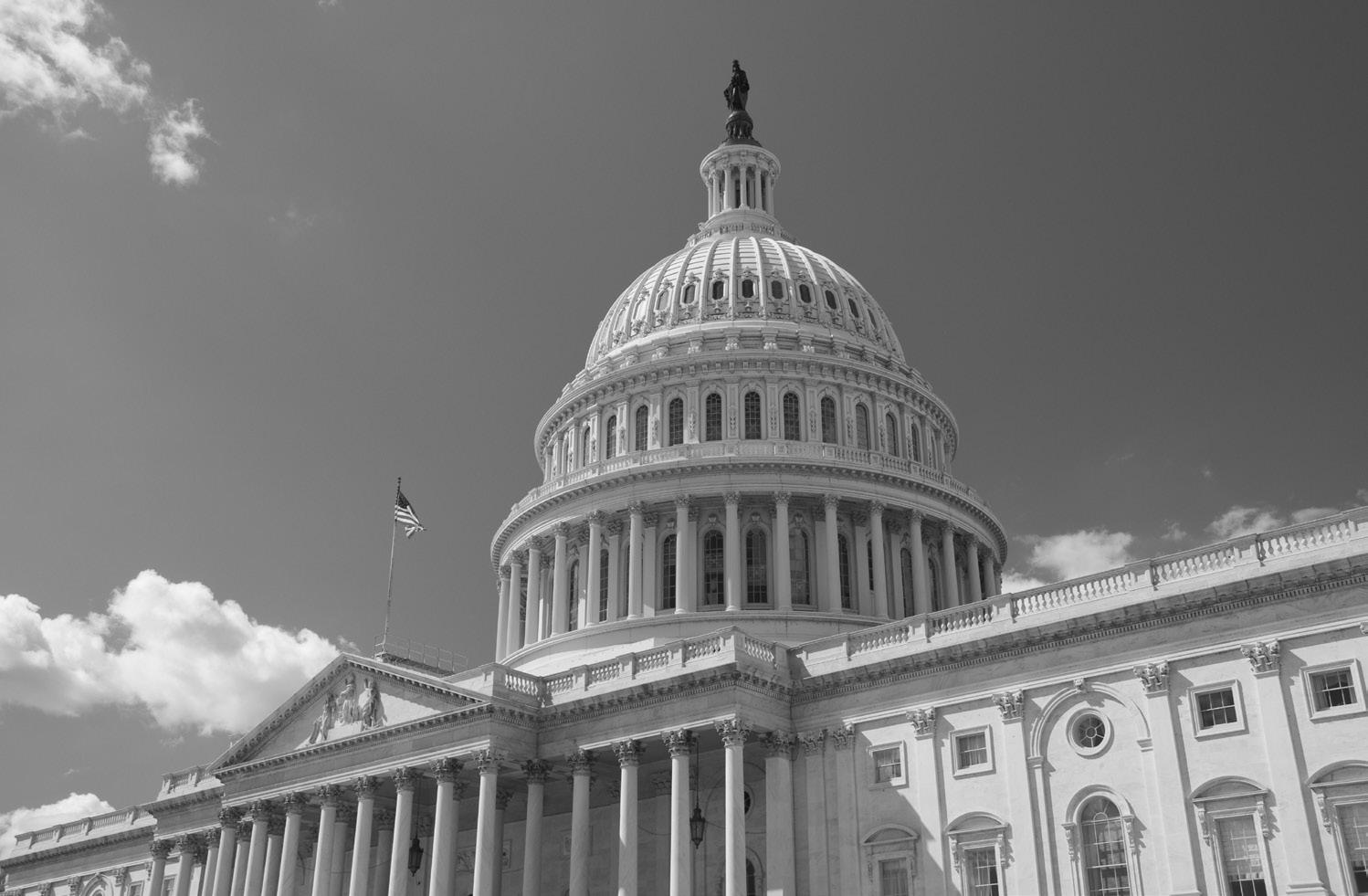

Surprising fall and winter color

Don’t give up on your garden yet. Too often we default to the idea that the garden is done by October. Yet with some thoughtful choices, we can choreograph color to cheer even the darkest winter morning.
To begin with, there are a surprising number of perennials that refuse to go gently into the good night of fall and winter, going out in a blaze of color. They may be deciduous, but they insist on a splashy exit. Ornamental grasses may be the first group that comes to mind, which get a lot of attention this time of year, from Hakonechloa species in shady spots to Imperata, Andropogon, and Panicum in the sun. Peonies are well-known for their lovely red foliage in fall, and many sedums take on either gold or red tones with a chill in the air.
Here are a few others you may not have considered that I’m enjoying right now. When you choose one, think about planning for a colorful partner that will set off its fall garb, whether permanent, like a dwarf conifer, seasonal, like a fall bulb, or “right-now” like annual kales and pansies.

Amsonia spp. Can you say multiseason appeal? Amsonia brings a welcome airy texture to the border at least nine months of the year. Amsonia hubrechtii has finer needle-like foliage, while A. tabermontana has rounded willowy leaves, Star-shaped blue flowers appear in late spring (hence the common name blue star), and in fall, they morph yellow. Quite adaptable to varied conditions, they can thrive in full sun or part shade with decently draining soil. Wonderful massed, especially paired with evergreens, whether in front like Armeria (Sea thrift) or liriope (mondo
grass), or behind, like hebes or Ilex crenata.
Fall color: gold to butterscotch; hubrechtii is known for the most vibrant color.
Hosta cultivars Having delivered months of bold, wavy, striped or striated leaves in gold, green and blue, plus often fragrant wands of late summer flowers in the shade, what more could we ask of hostas? To be slug proof or evergreen, of course! Beyond that, many hostas also offer lovely gold tones
Seattle Mayor Bruce Harrell intends to run for reelection next year.
Harrell announced that he has registered his re-election campaign with the Seattle Ethics and Elections Commission to run for a second term. He was previously elected mayor in 2021 by the largest margin for a non-incumbent candidate since 1969.
Harrell touted his administration’s “One Seattle” approach to handling the top issues facing the city, including homelessness, transportation, affordable housing and public safety.
“But there is more work to do – this is the time for proven leadership to stand up for our values and keep Seattle moving forward as a city that is welcoming, affordable, and safe,” Harrell said in an announcement.
Since being sworn-in, Harrell has had to face homelessness, housing affordability and public safety concerns. With approval from the city council, the mayor created the city’s Unified Care Team, which work to ensure public spaces, sidewalks and streets remain safe and accessible to all.
The team most recently counted 63% fewer homeless tents throughout the city than the end of 2024. However, the 2024 Point-In-Time count tallied up 16,385 people experiencing homelessness in the King County region.
Harrell has also successfully received voter-approval on two levies, including the largest tax package in city history.
The Seattle Housing Levy is a seven-year property tax levy that is anticipated to collect $970 million through 2030. Funding goes toward creating and preserving affordable rental housing for seniors, homeless people and other low-income households.
Last month, Seattle voters approved a transportation levy that totals $1.55 billion over the course of its eight year life-span. That’s the largest tax proposal in city history
Ripple effects of the COVID-19 pandemic have also impacted the local economy as levels of downtown worker foot traffic are still far below pre-pandemic levels. In turn, Harrell created the Downtown Restoration Plan, which seeks to convert the downtown area into a more residential neighborhood.
Harrell has also seen the Seattle Police Department face a continuing officer shortage while crime reached an all-time high in 2022. Police officers, including Chief Adrian Diaz, have faced legal claims of grooming and harassment.
Harrell has already received endorsements including Governor-elect and Attorney General Bob Ferguson, Attorney General-elect Nick Brown, Congresswoman Pramila Jayapal, King County Executive Dow Constantine, state Senator Jamie Pedersen, and a collective of city mayors in the Puget Sound region.
Prior to being elected mayor, Harrell served on the Seattle City Council from 2007 through 2019. Harrell said he will publicly kick off his re-election campaign early next year and participate in the Democracy Voucher Program.
By Spencer Pauley The Center Square
PHOTOS COURTESY ERICA BROWNE GRIVAS
Erica Browne Grivas Get Growing
GRIVAS, 4
Queen Anne & Magnolia Worship Services

Sunday Worship at 10am Live Streamed on our Facebook page and YouTube. Simply look for Magnolia Lutheran Church.
Twelfth Church of Christ, Scientist
In Person and Online Church Services
All are welcome & warmly invited to join these healing services
For best audio results, please join by clicking on the link from your computer or smartphone and choose “Call Over Internet”
All Zoom Services Meeting ID: 418 806 2637 https://us02web.zoom.us/j/4188062637
Sunday Services 11:00am – 12noon Pacific
Wednesday Testimonies 7:30pm – 8:30pm Pacific
Christian Science Quarterly Bible Lessons
Our weekly Bible Lesson Sermon may be found here: https://quarterly.christianscience.com/
Additional Healing Resources: ChristianScience.com CSWashington.com SeattleMetroReadingRoom.org
For additional assistance, please contact us at seattle12cs@gmail.com or 206.283.2300 ChristianScienceTwelfthSeattle.com
For a Healthier You CHIROPRACTORS
DENTISTS
Queen Anne Dental Group

Dr. Frank J. Calvo & Family
Cosmetic, Implant, & General Dentistry
400 Boston St. 206-284-7812 www.QADG.net





Chiropractic AND Massage Therapy
Darrell Gibson, D.C. • Sarah Gibson, D.C. Graeme Gibson, D.C.
David E. Goodall III, LMT
Sarah Rose Nottingham, LMT
Lauren E. Traynor, LMT
SERVING THE FAMILIES OF QUEEN ANN E SINCE 1991 1905 Queen Anne Ave N • 206.282.8275 www.QueenAnneChiro.com
Savvy Senior: What happens to your debt when you die?
Dear Savvy Senior,
Can my kids inherit my debt after I die? I have taken on a lot of credit card debt over the past 10 years or so, and I’m worried that my son and daughter will get stuck with it when I die.
Indebted Senior
Dear Indebted, In most cases when a person with debt dies, it’s their estate, not their kids, that is legally responsible. Here’s what you should know.
DEBT AFTER DEATH
When you die, your estate – which consists of the stuff you own while you’re alive (property, investments and cash) – will be responsible for paying your debts. If you don’t have enough cash to pay your debts, your kids will have to sell your assets and pay off your creditors with the proceeds.
Whatever is left over is passed along to your heirs as dictated by the terms of your will, if you have one. If you don’t have a will, the intestacy laws of the state you reside in will determine how your estate will be distributed.
If, however, you die broke, or there isn’t enough money left over to pay your “unsecured debts” – credit cards, medical bills, personal loans – then your estate is declared insolvent, and your creditors will have to eat the loss.
“Secured debts” – loans
attached to an asset such as a house or a car – are a different story. If you have a mortgage or car loan when you die, those monthly payments will need to be made by your estate or heirs, or the lender can seize the property.
There are, however, a couple of exceptions that would make your kids legally responsible for your debt after you pass away. One is if your son and/or daughter is a joint holder on a credit card account that you owe on. And the other is if either one of them co-signed a loan with you.
SPOUSES BEWARE
If you’re married, these same debt inheritance rules apply to surviving spouses too, unless you live in a community property state, which includes Arizona, California, Idaho, Louisiana, Nevada, New Mexico, Texas, Washington and Wisconsin. In these states, any debts that one spouse acquires after the start of a marriage belongs to the other spouse too. Therefore, spouses in community property states are usually responsible for their deceased spouses’ debts.
PROTECTED ASSETS
If you have any IRAs, 401(k)s, brokerage accounts, life insurance policies or employer-based pension plans, these are assets that creditors usually cannot get access to. That’s because these accounts typically have designated beneficiaries, and the money
goes directly to those people without passing through the estate.
SETTLING THE ESTATE
You should also make your kids aware that if you die with debt, and you have no assets, settling your estate will be fairly simple. Your executor will need to send out letters to your creditors explaining the situation, including a copy of your death certificate, and that will probably take care of it. But your kids may still have to deal with aggressive debt collectors who try to guilt them into paying.
If you have some assets, but not enough to pay all your debts, your state’s probate court has a distinct list of what bills get priority. The details vary by state, but generally estate administrating fees, funeral expenses, taxes and last illness medical bills get paid first, followed by secured debts and lastly, credit card debts.
LEGAL HELP?
NEED
If you or your kids have questions or need legal assistance, contact a consumer law attorney or probate attorney. If you can’t afford a lawyer, go to LawHelp.org to search for free legal help in your area.
Send your senior questions to: Savvy Senior, P.O. Box 5443, Norman, OK 73070, or visit SavvySenior.org.
Jim Miller is a contributor to the NBC Today show and author of “The Savvy Senior” book.


Auditions open to join Seattle Men’s Chorus
Seattle Men’s Chorus is once again opening its doors to new chorus members with auditions on Monday, Jan. 6 from 6–9:30 p.m., and Saturday, Jan. 11 from 9 a.m.–2 p.m. All participants are required to register online before auditioning.
The Seattle Men’s Chorus is among the largest — and longest-running — LGBTQidentified choruses in the world. The Chorus turned 45 in 2024 with more than 200 members.
Established in 1979, the Seattle Men’s Chorus has performed at locations across the U.S., such as Carnegie Hall, Lincoln Center, and Boston Symphony Hall, and has toured internationally in Canada, Europe, Australia, and New Zealand. The Chorus has commissioned original compositions from renowned composers like John Corigliano, Gian Carlo Menotti, Ned Rorem, and David Diamond. Their shows have showcased performances with notable guest stars from stage and screen, including Nina West, Harvey Fierstein, Megan Mullally, Kristin Chenoweth, Megan Hilty, and Tituss Burgess.
Known for its annual holiday performances — including this year’s popular Ho Ho Ho: Seattle Men’s Chorus Holiday Show with performances running through Dec. 21 — the Chorus entertains audiences year-round with a mix of classic tunes and contemporary hits, all enhanced by creative costumes and choreography.
The upcoming auditions for 2025
include the Chorus’ new spring concert, Seattle Men’s Chorus Salutes Dolly Parton from April 5–May 18 with performances in Seattle, Bellingham, Everett and Tacoma. The Seattle Men’s Chorus values diversity within its ranks. While the Chorus has worked to cultivate a more diverse group of singers, rising to 23% in 2024 compared to 16% in 2022, it knows it can always do better to reflect the community and creators it serves. The Chorus aims to expand this diversity through the upcoming auditions.
"Seeing a Seattle Men’s Chorus performance affirmed exactly what I was meant to be doing at that time," said Charlie Porter, who joined the Seattle Men’s Chorus in 2022. "It was a profound moment for me, seeing people of color on stage, embodying the same values and representation I aspire to bring."
Seattle Men’s Chorus rehearsal obligations include Monday evenings through performance week and at minimum one Saturday rehearsal each concert cycle.
“Making music with the Seattle Men’s Chorus is a gift that I get all year,” said Paul Caldwell, Seattle Men’s Chorus and Seattle Women’s Chorus artistic director. “To be a part of this amazing group of people is very special. I look forward to including as many members as we can.”
Those interested in auditioning are encouraged to complete this form on the Seattle Men’s Chorus website, and audition details will be distributed via email.
Seattle Restored offering entrepreneurship opportunity
Seattle Restored is offering entrepreneurs and small business owners a chance to launch their ideas with a two-month pop-up program. Featuring locations in downtown and Pioneer Square, this program provides an opportunity to bring your vision to life.
Participants receive a no-cost lease, a $2,000 stipend, $500 for tenant improvements, setup assistance, marketing support,
general liability insurance, and access to entrepreneurial education resources. It’s the perfect opportunity to test your concept, connect with the community, and gain valuable experience in one of Seattle’s most dynamic neighborhoods.
Apply at https://seattlerestored.org/participate/apply/ by 8 p.m. on Jan. 5 to be considered.

King County expands mobile crisis care teams to reach more people
King County is expanding its mobile crisis program to help people throughout the region experiencing behavioral health or substance use crises, to the tune of more than $20 million next year. Mobile crisis teams help people in crisis across the county. They arrive on scene to de-escalate and resolve crises occurring on streets and work to connect unhoused people to supportive services throughout the county.
King County’s Behavioral Health and Recovery Division launched 10 new mobile crisis teams to the field on Dec. 2.
There are now 27 mobile crisis teams on the ground, which helps provide the region with more coverage.
With the inclusion of the new team, King County is funding a total of $22 million for mobile crisis teams in 2025, according to King County Department of Community and Human Services Communications Manager Angie Malpass. Funding for the expansion of the county’s mobile crisis teams comes in part from $3.5 million from last year's voter-approved $1.3 billion Crisis Care Centers Levy for 2024 and 2025. The levy costs property owners 15 cents per $1,000 in assessed value, meaning
GRIVAS
From page 1
an average King County homeowner paid approximately $127 toward the levy in 2024.
The expansion is also being funded by Medicaid; national suicide prevention and mental health crisis hotline legislation to prepare teams for enhanced mobile crisis designation; the MIDD Behavioral Health Sales Tax, which is a countywide 0.1% sales tax generating approximately $136 million per two-year biennium; the state’s general fund; and funding from the city of Seattle.
King County’s mobile crisis teams have been operated by the nonprofit Downtown Emergency Service Center since 2009. The organization will continue serving those in need in Seattle and Vashon.
Sound Behavioral Health and Crisis Connections are also new organizations working within the county’s mobile crisis program.
“We’re thrilled to extend our contract with [the Downtown Emergency Service Center] and bring on Sound for the expansion — both are proven, longtrusted partners in behavioral health care and are already collaborating and supporting each other to put our clients first,” King County Behavioral Health and Recovery Division Director Susan McLaughlin said in a statement.
before going to ground. Preferring even moisture, some are more sun-tolerant than others. Consider mixing with Amsonia, perhaps underplanted with autumn crocus bulbs.
Fall color: lime to gold
Perennial geranium spp. Several of these hummocky perennials are true workhorses, like Geranium ‘Rozanne,’ which blooms longer than anything in my garden. The foliage has hints of red when it emerges for added interest. I used to think it bloomed from April-November, but this December the plants are still gamely putting out blooms here and
Reverse searing to perfection
When you splurge on a luxurious beef tenderloin for the holidays, consider reverse searing as the cooking method. Reverse searing is a foolproof way to respect the integrity of a rich and tender cut of lean meat. While the term may sound intimidating, it's a straightforward technique that ensures a luscious, evenly pink interior and a browned outer crust.
Reverse searing requires a long, slow cook for the meat to reach temperature, followed by a hot sear to finish and brown the exterior. The technique is simple; all you need is a meat thermometer to rely on to gauge doneness. For extra ease, you can have your butcher truss the meat for an even cook. To truss the meat yourself, trim the tenderloin of any fat and silver skin. Fold the narrow end under the filet for even presentation and truss with kitchen string in 1-inch intervals.
Begin the night before cooking: Evenly salt the meat. Then refrigerate it overnight, uncovered, to air-dry. The overnight rest allows the salt to penetrate the meat, and air-drying ensures browning when cooking. Let the meat rest at room temperature one hour before roasting. Finish with a sauce of your choice. This recipe includes a rich port wine sauce, worthy of a special meal.
REVERSE SEARED BEEF
TENDERLOIN WITH PORT WINE SAUCE
Active time: 1 hour
Total time: about 2 hours plus resting time
Yield: Serves: 4 to 6
X 1 center-cut beef tenderloin, 2 to 3 pounds
X Kosher salt
X 3 tablespoons unsalted butter, divided, plus 2 tablespoons chilled unsalted butter
X 1 shallot, chopped, about 1/4 cup
X 1 large garlic clove, chopped
X 2 cups beef stock
X 1 cup ruby port wine
X 1 cup full-bodied red wine
X 2 rosemary sprigs
X 2 teaspoons balsamic vinegar
X 1/4 teaspoon freshly ground black pepper
X Thyme sprigs
Evenly season the meat with the salt. Place the beef on a rack over a rimmed baking sheet. Refrigerate,
there. To be fair, it’s not a blanket of blue purple as in high season, but I’m not feeling choosy this time of year. In addition, the leaves are extra dramatic, with more gold centers melting into red rims. Sun or partial shade is best.
Fall color: red and burgundyGeranium sanguineum and relatives have vivid color.
Thalictrum spp. (Meadow rue)
I was already in smitten with this shade-lover’s columbine-like foliage, the waves of fairytale clouds of blooms that last for ages in a vase. When I saw that tall foliage turn a uniform gold in a shady corner of my yard, I was hooked. Even moisture and protection from afternoon sun is a must.

uncovered, for 24 hours. Remove from the refrigerator 1 hour before roasting and let stand at room temperature.
To make the sauce, melt 1 tablespoon butter in a wide saucepan over medium heat. Add the shallot and saute until soft without coloring, 2 to 3 minutes. Add the garlic and saute until fragrant, about 30 seconds more. Add the beef stock, port wine, red wine and rosemary. Bring to a boil and continue to boil until the liquid is reduced to about 2 cups, about 25 minutes.
Strain the sauce through a finemeshed sieve into a small saucepan, pushing down on the solids to extract as much liquid as possible. Add the vinegar and bring the sauce to a simmer over medium heat. Simmer until reduced to about 1 cup and slightly syrupy, about 10 minutes. Season with 1/4 teaspoon each salt and black pepper. Taste for seasoning and set aside. Heat the oven to 250 degrees. Place the baking sheet with the rack and meat in the oven. Roast until an instant-read thermometer inserted into the thickest part of the roast registers
Fall color: gold
Bergenia and its cousin Mukdenia offer red foliage tones in two flavors – the bold- paddle shaped evergreen leaves of Bergenia, with tinges of fall red, and deciduous but elegantly dissected Mukdenia whose foliage goes fully red before falling. Both like partial shade and even moisture, though Bergenia is tough once established. Or try the cross Mukgenia ‘Nova Flame,’ which is heat- but not droughttolerant, offering vivid color and toothy deciduous leaves.
Fall color: red and burgundy Chrysanthemum ‘Sheffield Pink’ This was my first year growing this cultivar, and what a winner! The blossoms are spidery,
unlike the tufted poms sold with corn stalks and pumpkins, and the plants a bit larger. They are a dreamy shell pink with a yellow eye, and bloom prolifically when we crave color. The Center for Urban Horticulture features a row of them between tall grasses and cannas to great effect. Mine is just finishing its show in early December, having easily overwintered in a driveway Smart Pot.
Fall color: red Dwarf blueberries – Vaccinum spp. and cvs. newer dwarf blueberries bred for beautiful foliage along with tasty fruit. ‘Sunshine Blue’ and ‘Blue Icing,’ for example, take on red, blue and iridescent tones in
115 degrees, about 60 minutes, depending on the thickness of the meat. Remove the beef from the oven and rest for 10 minutes. Carefully remove the twine.
Melt 2 tablespoons butter a large skillet over high heat. Add the tenderloin and thyme. Sear the meat on all sides until well browned and the temperature registers 125 degrees to 130 degrees, basting with the butter and thyme. Transfer the meat to a cutting board and let rest for 10 minutes. While the meat is resting, gently reheat the sauce over medium-low heat. Whisk in the 2 tablespoons chilled butter, 1 tablespoon at a time, until emulsified (do not boil or the sauce will break). Remove from the heat. Cut the tenderloin across the grain in thick slices. Stir any juices from the cutting board into the sauce. Serve the meat immediately with the sauce.
Lynda Balslev is an award-winning writer, cookbook author, and recipe developer based in northern California. Visit TasteFood at TasteFoodblog.com.
the fall that add nice color to arrangements without hogging border space. These get between 2-4’ tall and wide and are suitable for pot culture.
- Fall color: red and burgundy. This is to say nothing of seedheads, hips, bark, and other wonders that come to the fore for our admiration this time of year. For more inspiration, here’s a comprehensive list of plants that look good into fall, some which may have fall color: https://www. usperennials.com/perennialsby-collections/autumn-interestperennials/, and one for fall color specifically https://yardandgarden. extension.iastate.edu/how-to/ perennials-fall-color.
By Spencer Pauley The Center Square
By Lynda Balslev
ADOBE STOCK IMAGE
PHOTO BY LYNDA BALSLEV
Federal judge blocks Albertsons-Kroger merger
By TJ Martinell
A federal judge has blocked the $24.6 billion proposed merger between Albertsons and Kroger in response to a lawsuit filed against it by the Federal Trade Commission and several states.
In the ruling, Oregon-based U.S. District Judge Adrienne Nelson argued that the merger "is a plausible, relevant market for antitrust purposes,” adding that the plaintiffs “are likely to succeed on the merits and the equities weigh in favor of an injunction.”
Kroger owns Quality Food Center and Fred Meyer, while Albertsons owns Safeway and Haggen. The proposed merger was announced in October 2022. As part of the agreement, it would have sold hundreds of stores to privately-owned C&S Wholesale Grocer to avoid accusations of creating a monopoly.
A federal judge has blocked the $24.6 billion proposed merger between Albertsons and Kroger in response to a lawsuit filed against it by the Federal Trade Commission and several states.
In the ruling, Oregon-based U.S. District Judge Adrienne Nelson argued that the merger "is a plausible, relevant market for antitrust purposes,” adding that the plaintiffs “are likely to succeed on the merits and the equities weigh in favor of an injunction.”

Kroger owns Quality Food Center and Fred Meyer, while Albertsons owns Safeway and Haggen. The proposed merger was announced in October 2022. As part of the agreement, it would have sold hundreds of stores to privately-owned C&S Wholesale Grocer to avoid accusations of creating a monopoly.
Advocates for the merger claim that it is necessary for the two grocers to compete with a changing market landscape, with much of retail sales shifting over to companies like Costco, Walmart and Amazon.
Among those in favor of the merger is the Mountain States Policy Center, based out of Idaho. President Chris Cargill told The Center Square in an interview prior to the court ruling that “this is not just about having an Albertsons store or a Kroger store. This is about competition with the giants.”
He added that the two companies make up 9% of nationwide industry sales. “It’s not as if we’re looking at 40-40-60%. This is the last
best chance to try to level the playing field. But if you’re only looking at it with tunnel vision, I guess I could understand why they would be opposed to it.”
Nelson argued in her ruling that "supermarkets are distinct from other grocery retailers. Professionals understand supermarkets to be a distinct category of stores that compete with each other, and that supermarkets monitor each other's pricing and are sensitive to changes bolsters the conclusion that supermarkets are a submarket within grocery retailers. For the reasons discussed above...the supermarkets market, consisting of traditional supermarkets and supercenters, is a relevant product market for antitrust purposes.”
In a statement, a Kroger spokesperson argued that the merger would have resulted in $1 billion invested to lower grocery prices and another $1 billion in higher grocery worker wages. The Kroger spokesperson said the company is also "disappointed" in the both the federal and state rulings, "which overlook the substantial evidence presented at trial showing that a merger between Kroger and Albertsons would advance the company’s decades-long commitment to lowering prices, respecting collective bargaining agreements, and is in the best interests of customers, associates, and the broader competitive environment in a rapidly evolving grocery landscape. The Company is currently reviewing its options."
Washington taxpayers could pay expiring COVID aid portion of state health insurance
By Carleen Johnson The Center Square
Halfway through open enrollment for Washington’s marketplace for health and dental insurance, called the Washington Health Benefit Exchange (HBE), executives are urging lawmakers to ensure state subsidies are part of upcoming budget plans for the 2025 legislative session.
During a Monday work session, Ingrid Ulrey, CEO of the HBE, told members of the House Healthcare and Wellness Committee that they are on track for record numbers for the open enrollment period which ends Jan. 15, 2025.
“We are smack dab in the middle of open enrollment and it’s going incredibly well because both the federal and state supports continue to be in place,” said Ulrey. “We expect to max our record to have 300,000 people covered for 2025.”
Ulrey told lawmakers their only ask for the upcoming session is that state level subsidies, called Cascade Care Savings, that help cover premiums for people covered by the HBE are fully funded, as federal tax credits are set to expire at the end of 2025.
“The two subsidy programs I want to talk to you about are critical because they take a gross premium on average in our market of over $600 per month and they make it affordable for many Washingtonians,” said Ulrey. “80% of the people in our market access either the federal or state subsidy, or both.”

During the COVID pandemic, federal officials offered tax credits to ensure people with individual (non-employer) healthcare plans could keep them.
“Federal officials were worried about people being able to keep their coverage, so they enhanced the level of the federal tax credit to cover more people and for a more generous amount,” said Ulrey, who explained Washington is one of a handful of states that layers on top of the federal support with state subsidies.
Ulrey gave the example of a woman on the individual market who currently pays $160 a month for coverage, receiving the
enhanced federal premium tax credit.
“If and when Congress lets the tax credit expire, she would be paying $325 per month,” said Ulrey.
She continued: “If it goes away, premiums would go up an average of 72% for 80% of those people covered,” she said adding that their independent actuaries are predicting that 70,000 people would experience premium increases so steep that they would forgo coverage and become uninsured.
Ulrey said the loss of the federal tax credit would amount to losing $250 million for Washington state per year.
“We can’t subsidize our way out
of this, but it’s also mission critical that we keep these subsidies in place,” said Ulrey who told lawmakers over 100,000 customers in the state exchange are benefiting from Cascade Care Savings.
“37,000 customers have a plan they pay less than $25 a month for,” she added.
Elizabeth New, director of the Center for Healthcare at the Washington Policy Center think tank watched the Monday work session and emailed comments in response to The Center Square.
“Washington cannot afford and should not afford such generous health insurance subsidies for people who make more than 400%
of the federal poverty level,” wrote New. “Not only would doing so harm taxpayers, many of whom are trying to keep up with their own health care costs, we need more people, not fewer, invested in health care costs to help with health care cost containment."
New continued: "Safety nets for people in need are important, and we have those. Continuing overly generous subsidies that hurt taxpayers is unwise. Washington state is becoming reliable for requiring lower-income taxpayers to help pay the way for those with higher incomes and more resources."
As previously reported by New and The Center Square, Washington taxpayers are also footing the bill for an expansion of a Medicaid-like program for low-income adults who are undocumented immigrants.
Unlike Medicaid, the program, called Apple Health Expansion, is shouldered by Washington taxpayers, while Medicaid is funded at the state and federal level and is not available for people who entered the country illegally.
According to New, the Washington State Healthcare Authority said $72 million had been allocated for the program.
An October 2024 report from HBE on Immigrant Health Coverage (IHC) showed approximately 42,100 IHC customers have applied for coverage through Washington Healthplanfinder since Nov. 1, 2023, with 75% income eligible for the Apple Health Expansion, which again is funded by taxpayers.
The Center Square
ADOBE STOCK IMAGE
ADOBE STOCK IMAGE
King County Executive doubles down on housing-first approach to homelessness
Exiting King County Executive Dow Constantine is doubling down on a housing-first approach to addressing the homelessness crisis in a recent interview with ChangeWA.
ChangeWA, a non-partisan organization, released an interview it had with Constantine on Wednesday. In the interview, Constantine showed continued support for the region’s continued housing-first approach, despite statistics showing no signs of improvements to the crisis.
In 2015 Constantine and then-Seattle Mayor Ed Murray declared homelessness an emergency facing the region. That year, the county’s federally mandated Point-in-Time Count tallied 10,047 homeless people across the county. That has increased 63% to an alltime high of 16,385 unhoused people this year.
Constantine said homelessness is at its core a housing issue and the region has not created enough general housing to keep pace with the growing need.
The executive blames increased demand for affordable housing spurred by economic growth and increasing rents and home price, along with a disinvestment in affordable housing for the cause of people being pushed to the brink of homelessness. This was further exacerbated by the COVID-19 pandemic.
Constantine touted the county’s Health Through Housing initiative, which receives one-tenth of a cent of sales tax revenue for the purchase and operation of hotels to convert into emergency and permanent

supportive housing.
The county’s goal is to create and sustain up to 1,600 affordable and supportive housing units for homeless people through the program.
As of the end of 2023, Health Through Housing acquired 1,495 housing units, with 1,358 units currently in operation. A report on the initiative found that the average capital perunit costs among the properties were $273,021 from 2021 to 2023.
During the ChangeWA interview, Constantine was asked how could addiction and mental health issues not be considered significant when homeless people are showing signs of addiction. This question stemmed from Constantine’s 2024 State of the County speech, in which he said that “it is wrong” to assert that mental health and addiction are a cause of homelessness.
“Addiction and mental health issues are significant regardless of an individual’s housing
status,” Constantine said in response. “They may be a cause or an effect of an individual’s homelessness – but whether the phenomenon of widespread homelessness exists in a place comes down to whether there are enough housing units for the number of people who need housing.”
Constantine partnered with other county leaders to create the King County Regional Homelessness Authority [KCRHA], which has served as the organization responsible for coordinating funding and services for unhoused people across all of King County since 2019.
KCRHA follows Constantine’s beliefs in a housing-first approach to addressing homelessness. However, a housingfirst approach is not cheap.
According to the agency, a plan to increase housing capacity in King County to needed levels could potentially cost $450 million to $1.1 billion per year over the next 10 years.
In ChangeWA’s interview with Constantine, the executive said it was difficult to isolate funding specifically for homelessness. He added that county spending for housing, emergency response, public health and human services are all necessary for efforts to curb homelessness rates, making it difficult to provide a single definitive figure for annual spending.
The agency’s funding for nonprofit organizations increased from approximately $134.7 million in 2022 to $169 million in 2023, but homelessness statistics have worsened. King County has budgeted $108 million for KCRHA from 2021-2024. Constantine deferred to KCRHA, saying it is better suited to provide a breakdown of its spending.
Next year will be Constantine’s last as the King County Executive. Last month, he announced that he will not run for reelection next year after serving in the role for 15 years.
Secretary Hobbs awards $8k for check for tax-saving
idea
The Productivity Board, a state employee incentive program of the Office of the Secretary of State, presented its Teamwork Incentive Program award to the “LCB Pathfinders,” composed of employees from the Liquor Control Board and the Office of Administrative Hearings. The group was in Olympia last week to receive the ceremonial check from Secretary Hobbs in his office at the Legislative Building.
The team’s money-saving suggestion streamlines digitizing and accessing records between agencies. It also improves efficiency by minimizing document handling and reducing supply and storage needs. The suggestion has saved more than $44,000 in its first year, with more long-term savings expected.
LCB Pathfinders team members include the Liquor Control Board’s Kyle Arvila, Tinaya Smith, Richard O’Grady, Gerard Scheeler, and the Office of Administrative Hearings’ Beatrice Lupardus. Also pictured below are agency leaders RaShelle Davis, Chief Administrative Law Judge, OAH, Will Lukela, Director of LCB, Productivity Board employees Benjamin Kirkland, David Junius, Greg Mennegar, and Secretary Hobbs.
“Getting to shake hands today with some of the folks who submitted an amazing idea to save the state money was a real treat,” Secretary of State Steve Hobbs said. “We would love for more Washington employees to offer proposals to the Productivity Board so we can continue to innovate the state.”
The Productivity Board encourages all state employees to help save taxpayer money by offering up to $10,000 for a successful employee proposal to increase government efficiency. First created by the Legislature in 1982 and reinstated in 2023, the Productivity Board has saved the state millions of dollars. Several awards were approved by the board on Dec. 2, but more ideas are needed to continue to generate revenue and improve government efficiency.
More information, or to submit ideas, go to https://www.sos.wa.gov/statewide-programs/ washington-state-productivity-board
Washington Senate special election to feature Caldier vs political newcomer
By Carleen Johnson The Center Square
Rep. Michelle Caldier, R-Gig Harbor, has announced that she is running for State Senate in the 26th Legislative District, and on Wednesday she learned who her opponent will be.
The Nov. 2025 contest will be a special election to fill the remaining term of the seat vacated by Sen. Emily Randall’s election to the U.S. Congress.
According to The Olympian, former Peninsula School Board member Deb Krishnadasan was on Wednesday appointed to fill the state Senate seat vacated by Randall. Krishnadasan’s appointment was announced at the end of a joint Pierce-Kitsap county meeting on the Key Peninsula. According to a Dec. 2 news release: "The 26th Legislative District encompasses parts of both Pierce and Kitsap counties, making this a joint appointment effort between the two jurisdictions.
In a Tuesday news release emailed to The Center Square, Caldier wrote: “It has been an honor to serve my neighbors in the State House over the past ten years. I am running

for the State Senate to bring balance back to our state. This is a critical Senate seat to stop a Democratic Party supermajority. Democrats currently outnumber Republicans in the state Senate 29-20 and in the state House 58-40.
In the Legislative District 18 Senate contest, Republicans hoped to gain a seat. Following a machine recount in Clark County that concluded Monday, Democrat Adrian Cortes finished with 172 votes more than Republican Brad Benton, picking up one
additional vote in the recount.
As reported by The Center Square, the Washington State Republican Party has filed a legal challenge disputing the results of the initial count, contending more than a thousand votes were cast in the district from people who no longer live there.
Caldier said she would focus on the interests of families and the community. “I have always been committed to representing everyone in this community,” Caldier said. “Bringing balance to Washington government means making sure all voices are heard. That isn’t happening in Olympia right now. I will work every day in the Senate to hold the majority accountable to all the people. I will continue to reach across the aisle for commonsense solutions that will improve everyone’s quality of life.”
Caldier cited crime reduction, giving law enforcement more tools to protect people and property, strengthening schools and improving educational outcomes among her top priorities.
Caldier was first elected in 2014 to represent the 26th District, which includes Bremerton, Port Orchard, Key Peninsula, and Gig Harbor.
By Spencer Pauley The Center Square
ADOBE STOCK IMAGE
ADOBE STOCK IMAGE
WSDOT could overspend revenue by $7 billion by 2031
By TJ
As the state Legislature grapples with a disputed estimate of $14 billion of an operating budget overspend over the next four years, the Washington State Department of Transportation faces its own budget imbalance that could ultimately get as high as $7 billion by the 2029-31 biennium.
Driving the budget gap is a combination of decreased gas tax revenue, rising project costs, and potential new spending.
Although the Legislature passed a balanced transportation budget for the current biennium and expects to maintain that for the 2025-2027 budget, the state agency has previously warned it faced a potential $900 million budget shortfall by the 2029-31 biennium.
However, the latest figures from the state Economic and Revenue Forecast Council as well as the Office of Program Research revealed that deficit has increased.
Mark Matteson with OPR told legislators at the House Transportation Committee's Dec. 9 meeting that since the Legislature enacted the supplemental budget earlier this year, “additional challenges have arisen. The transportation revenue forecast dropped significantly. Continuing shift to more fuel-efficient vehicles.”
He added that transportation

construction projects have “experienced significant cost escalation. This is reflective of a national trend in escalating highway construction costs. According to national data, across the nation, project costs have gone up by twothirds in just over three years.”
As a result, WSDOT faces an estimated $2 billion budget gap by the end of the 2029-31 biennium. But that difference gets even
higher, $3.2 billion, when maintenance spending increases and project cost updates are accounted for, Matteson said. That deficit could climb even higher depending on the additional updated cost of certain projects that could add $2.5 billion to the deficit. Additionally, the proposed collective bargaining agreements could add a further $700 million through the 2031 fiscal year,
Matteson said.
The largest potential contributor to the increased deficit is the fish passage barrier replacements needed to comply with a federal court ruling; according to the ruling, all culverts located on WSDOT property must have all fish barriers removed by 2030.
While cost estimates have varied, Matteson said the fish barrier removal could add a further $4
billion to the agency’s budget deficit.
“This has become more challenging and expensive to address,” Matteson said.
He added “these possible increases could more than double what was shown…to a deficit of like $7 billion or so.”
Partly responsible for budget deficit is a decline in revenue from the state gas tax, which is a primary source of funding for the transportation budget. It is constitutionally protected so that it can only be spent on state highways.
According to a new report from ERFC, gas tax revenue forecast decreased by $185 million for the 2023-2025 biennium compared what was forecasted in February. At the same time, ERFC lower its forecast for gas tax revenue in the 2025-2027 biennium by $353 million.
It’s not a situation ERFC Executive Director Dave Reich expects to change. “We think gas consumption will be declining going forward.”
One cause for the decline in gas tax revenue is the transition for many Washington drivers away from gasoline vehicles and toward electric. While that means they’re paying the state electrical vehicle registration fees, the ERFC report states that those fees will only “partially offset” the loss of gas tax revenue.
Washington gun control group to push for permit-to-purchase in 2025
By Carleen
The Washington Alliance for Gun Responsibility has announced its 2025 legislative agenda.
The group lists seven priorities including a requirement for permits to purchase firearms, a tax on firearm and ammunition sales, and a restriction on “bulk sales.”
“Limiting the number of firearms and ammunition an individual can purchase at a given time is a straightforward approach to prevent gun trafficking,” said AGR in a Dec. 9 policy agenda memo.
Alan Gottlieb, chairman of the Citizens Committee for the Right to Keep and Bear Arms quickly reacted to the purchase permit and special tax items in comments posted by Dave Workman with Liberty Park Press and TheGunMag.
“No other enumerated constitutional right requires a permit from the government to be exercised,” Gottlieb told TGM. “Likewise, the exercise of other constitutional rights cannot be subjected to a punitive tax.”
In a Tuesday interview, Workman told The Center Square with Democrats firmly in control of the state legislature, he expects a heated battle over gun rights once again this session.
“I think they are going to push for everything they can and see what they can get passed,” said Workman.
“These guys are separated from reality, because they don’t seem to

want to acknowledge that criminals don’t go through the process to buy a firearm,” said Workman.
“They couldn’t pass a background check if their life depended on it, so they get guns through illicit means.”
Workman explained how the proposed permit process to buy a firearm would work.
“You have to go to a law enforcement agency to get the permit and you’ll have to pay that agency to do the background check,” explained Workman who suggested requiring a permit to buy a gun is unconstitutional.
“It adds another layer of paperwork, another speed bump to the
process of exercising a right that is protected by both the Washington state and U.S. Constitution,” he said. “The Washington Constitution says the right to keep and bear arms to protect oneself, shall not be impaired.”
Renee Hopkins, CEO for the Alliance for Gun Responsibility, said permit-to-purchase laws are proven as the single most effective policy to save lives and reduce gun violence
“All of our work in Washington over the last decade has been leading to this pivotal moment,” she said.
Asked about requiring a permit to purchase, AGR Chief of Staff,
Ryan Disch-Guzman responded via email to say: It's a mistake to assume that permit-to-purchase requirements have no impact on reducing illegal gun access. Experience and research show that when lawful sales are subject to better oversight—like verifying eligibility through a permitting process— fewer firearms reach those who aren’t allowed to have them."
Other AGR legislative priorities include:
-Restricting firearms in sensitive places like parks and public buildings and letting local governments craft their own regulations.
-Requiring safe storage of firearms in homes and vehicles with
safes or lock boxes.
-Holding dealers accountable for safe storage and maintaining accurate records.
As previously reported by The Center Square, a law passed this year and taking effect July 1, 2025, will require gun shops to install steel bars on the doors and windows and store all inventory in fireproof safes at night. It also requires the costly installation of more video cameras and the storage of weeks or even months of surveillance at a time. The burdensome regulations of House Bill 2118 have already forced some dealers to say they’re getting out of the business.
AGR also proposes an excise tax on the sale of guns and ammo to raise revenue to support gunshot victims and related services.
“All of these gun control laws are penalizing the wrong people. They’re not gonna prevent crimes and they’re not going to keep guns out of the wrong hands,” said Workman. “They won’t admit it, but all they want to do is add another layer of interference to discourage people from buying firearms. They never get enough and that’s why in the firearms community these guys (AGR) are recognized as a gun prohibition lobby."
The Alliance said state Rep. Liz Berry, D-36th District, will be the prime sponsor of the permit-topurchase bill. The Center Square requested comment from Rep. Berry but did not receive a response in time for publication.
Johnson The Center Square
Martinell The Center Square
